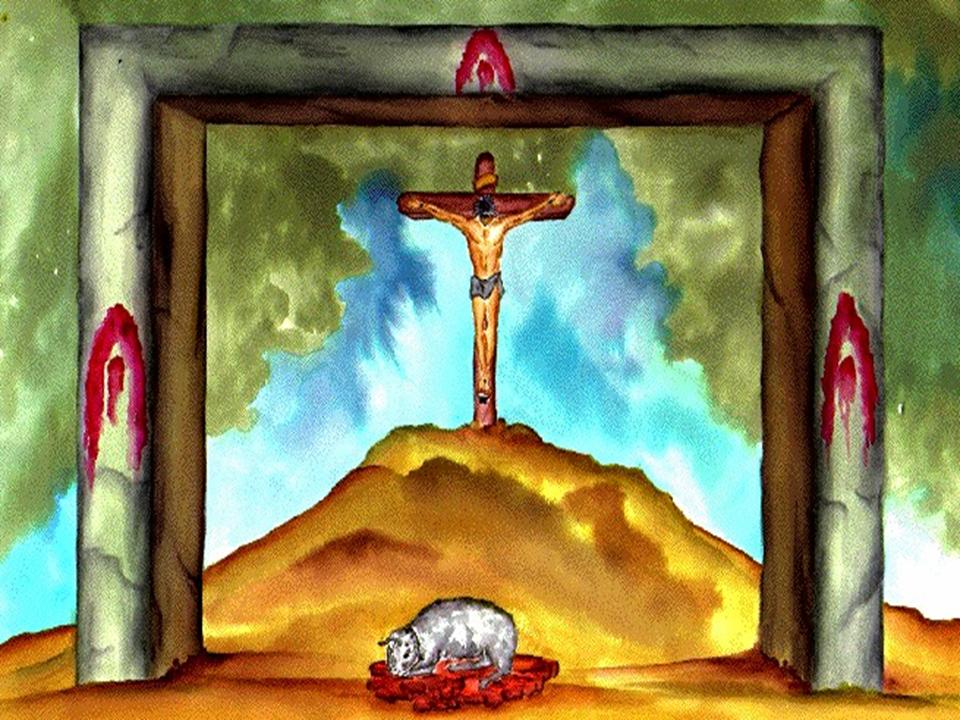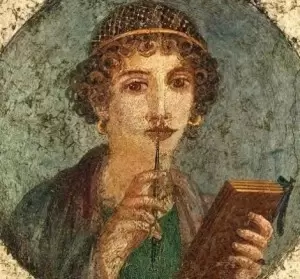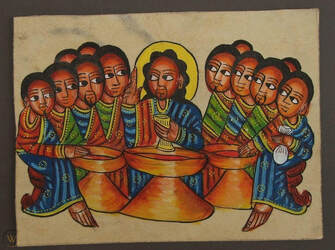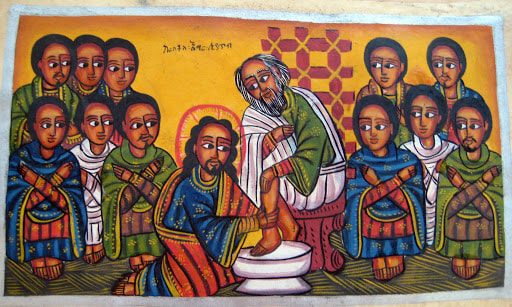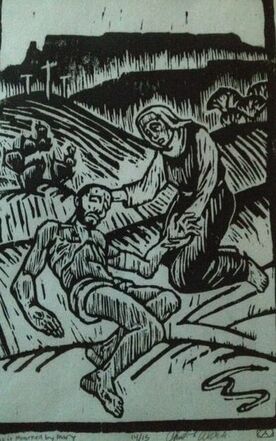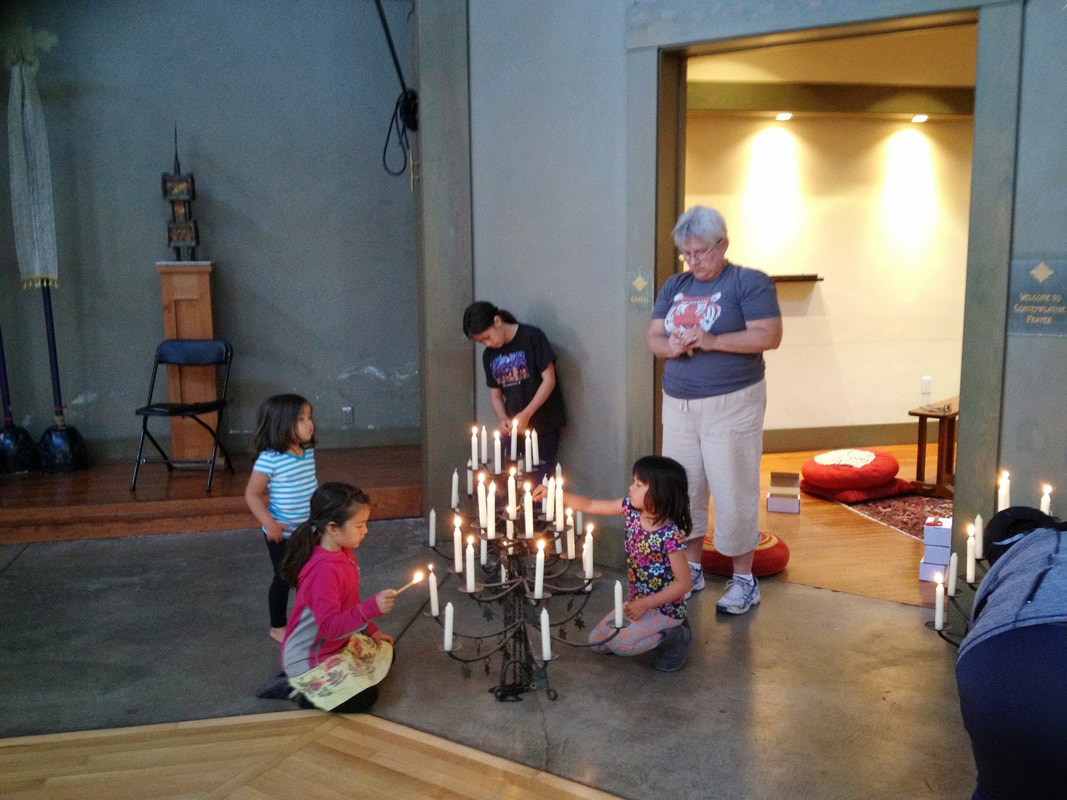- Home
- Explore
- Kids
-
St. Marks ABQ
- Beatitudes
- Catechesis
- Ministry Training
- Devotions
- Advent O Antiphons
- Advent Prayers
- Advent Stories
- Winter Saints
- Advent Creation Waits
- 40 Bible Stories
- Acts
- Summer Stories
- Parent Group
- SMMS Chapel News
- Chapel Time
- Song of the Month
- Contemplation and Chant
- Icon Visits
- Holy Week >
- Liturgy Class
- Reflections
- Blog
- draft
Holy Week: History, Theology, and Practice
"Put simply, the liturgies of the Paschal Triduum are the point in Christian ritual practice where the readiness of Christian faith to face human suffering squarely, and to find God working in and through suffering, is simultaneously most in evidence and most easily obscured...the liturgies of the Paschal Triduum enact the assembly's participation in the paschal mystery of Christ through a structure in which the resurrection is celebrated not as a moment "after" suffering and separate from it, but as a mystery born in and of suffering." (from This is the Night: Suffering, Salvation and the Liturgies of Holy Week", James W. Farwell, p. 7)
I wonder what part of Holy Week is your favorite?
|
|
|
|
I wonder what part of Holy Week you think is most important?
I wonder where you are in the story of Holy Week?
I wonder what we could leave out, and still have everything we need?
The Paschal Mystery
- Hebrew: Pesach (Passover)
- Greek: Pascha
- Latin: Passio (Suffering) and Transitus (Passage/Movement)
The Paschal Mystery celebrates the passage [of Jesus] through suffering and death into new life.
Historical Development
- Earliest pattern (Acts of Apostles)
- Daily gatherings to celebrate Eucharist in homes
- "2nd Generation" practice
- Weekly gatherings to celebrate Eucharist on "the first day of the week" (distinct from sabbath)
- 1st-3rd centuries
- Annual celebration of the "paschal mystery" (the indivisible mystery of the passion, death, and resurrection of Christ) in a single, unitive "paschal vigil" with prayers and readings through the night, and baptisms and Eucharist at daybreak
- 4th century
- "Holy Week" observance develops, with a week-long set of observances and elaborate liturgies
- "Egeria's Travels" are a pilgrim's description of Holy Week practices in 4th Century Jerusalem, beginning on the Sunday before Easter, and continuing through Easter Day
- Key: Experience the week as an "indivisible mystery"--not a series of distinct events, but rather a single, seamless whole
- "Holy Week" observance develops, with a week-long set of observances and elaborate liturgies
The Liturgies of Holy Week
Sunday (Palm/Passion Sunday)
Focus: Jesus' Final Entry into Jerusalem AND Jesus' Passion (suffering & death)
- 4th Century Jerusalem
- Pilgrimage/Stational Liturgy
- Procession with Palm Branches, Psalm 118 and antiphon "Blessed is he who comes in the name of the Lord!"
- During Reformation (1500's)
- Blessing of Palms & Processions were abandoned
- 1928 Book of Common Prayer
- Made provision for restoration of palm blessings & processions
- Current Practice (Palm Sunday Service in the 1979 Book of Common Prayer)
- Liturgy of the Palms (Normally outside the church)
- Anthem (Luke 19:38), Collect, Gospel of Palms, Blessing of Palms, Anthem (Matt 21:9), Procession (Psalm 118), Collect at the Door/Entrance of the Church (Collect for Monday of Holy Week/Collect for Fridays in Morning Prayer)
- Liturgy of the Eucharist
- Liturgy of the Word (including The Passion Gospel from Matthew, Mark, or Luke)
- Provision made for Dramatic or Participatory readings of the Passion
- ie. St. Mark's Palm Sunday 2019: "Passion Tableaux"
- Note: Creed and Confession may be omitted
- Provision made for Dramatic or Participatory readings of the Passion
- Liturgy of the Table
- Liturgy of the Word (including The Passion Gospel from Matthew, Mark, or Luke)
- Liturgy of the Palms (Normally outside the church)
- Ritual Considerations
- Observers Orientation: "...the Palm Sunday liturgy bodily and verbally situates the congregation in the role of receivers, observers, and responders to the action of Jesus." (Farwell, p. 54)
Monday
Tuesday
- Service of Tenebrae (Found in the Book of Occasional Services)
- NOTE: St. Mark's generally observes on Tuesday of Holy Week, but Wednesday is normative in most places.
- Tenebrae is Latin for darkness or shadows
- Tenebrae originates in ancient monastic offices of Matins and Lauds, as celebrated the last 3 days of Holy Week
- Distinctive features: chanting of the Lamentations and extinguishing of candles until church is in complete darkness
- Serves as a spiritual "prelude" and preparation for the Paschal Triduum
Wednesday
Thursday (Maundy Thursday)
Focus: Last Supper
- Earliest practice
- No celebration of Eucharist in week preceding the Paschal Vigil
- 4th century
- Evening Eucharist to commemorate the Last Supper of Jesus
- 7th century
- Ritual of footwashing
- The term "Maundy Thursday" comes from Latin word: mandatum (commandment); "A new commandment I give you, that you love one another even as I have loved you." (John 13:34)
- Stripping of the altar
- Ritual of footwashing
- Current Practice (Maundy Thursday Service in the 1979 Book of Common Prayer; additional options and instructions regarding footwashing, reserving the sacraments, stripping the altar, and Agape feast can be found in the Book of Occasional Services)
- Entrance
- Readings
- Footwashing (optional)
- Eucharist
- Stripping of the altar (optional)
- Other Practices
- Reconciliation of Penitents
- All night "watch" or prayer vigil following Maundy Thursday service (recalling Jesus call to his disciples to "watch and pray" with him in the Garden of Gethsemane before his arrest.)
- Ritual Considerations
- Shift from observation to participation: "No longer observers and responders in a third person relation with Jesus, those gathered for this liturgy are now called to imitate Jesus." (Farwell, 55)
Friday (Good Friday)
Focus: Crucifixion
"At this point...a congregation that has, over the course of two days, taken on Jesus' own high priestly ministry in the world now faces the ultimate symbol of servant ministry: the mystery of God's presence to the world at the very place we most fear, the place of loss, suffering, and death." (Farwell, p. 60)
- 3rd-5th centuries,
- "Solemn Collects" (3rd-4th century, Rome)
- Format: Deacon bids prayers; silence; Presider sums up the prayer with a "collect"
- Veneration of the Cross
- "Solemn Collects" (3rd-4th century, Rome)
- Current Practice (Good Friday Service in the 1979 Book of Common Prayer)
- Entrance
- Readings, including Passion Gospel (from John)
- Solemn Collects
- Veneration of the Cross (optional)
- Communion from the reserved sacrament (optional)
- Note: Celebration of Eucharist Prohibited
- Other Practices
- Fasting (traditional, but optional)
- Stations of the Cross
- A private devotion, not to replace the public liturgy of Good Friday
- Instructions for the Stations of the Cross can be found in the Book of Occasional Services
- St. Mark's stations (images, text, recordings) can be found online at: https://www.mothersylvia.com/via-crucis.html
- Ritual Considerations
- Good Friday readings set up intensified identification with Jesus.
- Sacrifical imagery is paramount
- Solemn Collects are directed outwardly to the world. (unlike Ash Wednesday's Litany of Penitence, which is self-referential).
- " 'We pray, therefore,' is performative language by which the people, in prayer are positioned to stand in the place of Jesus: their mission is the world's redemption." (Farwell, p. 59)
Saturday (Holy Saturday & the Great Vigil of Easter)
Focus: Waiting
- Holy Saturday (Holy Saturday service in the 1979 Book of Common Prayer--short and simple)
- Note: Celebration of Eucharist Prohibited
- Don't Forget the Holy Saturday morning "work day" to prepare for the Great Vigil of Easter!
- Great Vigil of Easter (Service for the Great Vigil of Easter in the 1979 Book of Common Prayer)
- Lighting of the Paschal Fire
- Lighting of Paschal Candle
- Exultet
- Vigil Readings
- Form drawn from the synagogue pattern of readings and prayers: Reading, Psalm/Canticle/Song, Collect
- Readings:
- Creation Genesis 1:1-2:4a
- Flood Genesis 7:1-5, 11-18, 8:6-18, 9:8-13
- Sacrifice of Isaac Genesis 22:1-18
- Exodus Exodus 14:10-31; 15:20-21
- Salvation free to all (Isaiah) Isaiah 55:1-11
- Learn wisdom and live Baruch 3:9-15, 3:32-4:4 or Proverbs 8:1-8, 19-21; 9:4b-6
- New heart and spirit (Ezekiel) Ezekiel 36:24-28
- Valley of Dry Bones (Ezekiel) Ezekiel 37:1-14
- Gathering of all people (Zephaniah) Zephaniah 3:14-20
- Baptism (or renewal of Baptismal Vows)
- Eucharist
- Lighting of the Paschal Fire
Sunday (Easter Day)
Focus: Resurrection
- Holy Eucharist
- Liturgy of the Word
- Liturgy of the Table
- Other Practices
- Blessing over food at Easter (Found in the Book of Occasional Services)
- For use in homes over Easter Day feast
- includes special blessings for wine, bread, lamb, eggs, and other food
- Easter Egg Hunts
- Blessing over food at Easter (Found in the Book of Occasional Services)
Copyright © 2015
